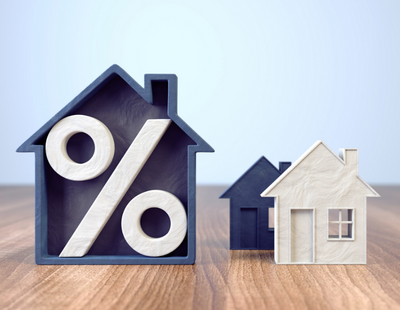Savills is the latest agency to suggest significant house price falls next year - although in its long-range forecast it says the wealthiest owners and landlords will see smaller falls and a quicker recovery.
The agency says that after over two years of strong growth, the average UK house price is expected to fall by 10 per cent in 2023 when interest rates peak, but the prime markets will see smaller falls and outperform over the five year forecast period.
There will be a growing divergence between cash and equity rich or cash buyers and other groups in their ability to transact, and between the mainstream market and prime markets where housing wealth is most concentrated. As an example, prime central London values are expected to fall by just two per cent.
On the assumption that interest rates gradually ease back from the middle of 2024, Savills is forecasting that values will begin to recover and that the average UK house price will rise by a net figure of plus six per cent in nominal terms over the next five years.
This is expected to be accompanied by a fall in activity levels to a little under three quarters of the levels seen pre-pandemic, as buy to let investors and first time buyers bear the brunt of increased affordability pressures next year, when Bank of England base rate is expected to peak at 4.0 per cent.
By end of the Savills forecast period - 2027 - the average UK house price is expected to be at £381,578, a £22,290 gain over five years, notwithstanding inflation.
“The housing market has remained remarkably strong through the first nine months of 2022, but demand dynamics changed over the autumn with the realisation that the Bank of England would need to go faster and further to tackle inflation” says Lucian Cook, Savills head of residential research.
“A new prime minister and fiscal policy U-turns appear to have reduced some of the pressure on interest rates, but affordability will still come under real pressure as the effect of higher interest rates feeds into buyers’ budgets. That, coupled with the significant cost of living pressures, means we expect to see prices fall by as much as 10% next year during a period of much reduced housing market activity.
“There are several factors that will insulate the market from the risk of a bigger downturn as seen after the financial crisis. Borrowers who haven’t locked into five-year fixed rates had their affordability heavily stress-tested until August this year. This, combined with relatively modest unemployment expectations and signs that lenders are looking to work with existing borrowers to help them manage their household finances, should limit the amount of forced-sale stock hitting the market next year.
“And looking longer term, the Bank of England’s relaxation of mortgage regulation over the summer has substantially enhanced the prospect of a price recovery; but only as and when interest rates start to be reduced, once inflationary pressures in the wider economy ease.
“Meanwhile, rental value growth will continue to outpace earnings growth in the short-term because of the pronounced imbalance between supply and demand, which will come as positive news to landlords already facing higher borrowing costs, but will put increasing pressure on struggling tenants.”
Meanwhile, the prime housing markets - defined by Savills as broadly the top five to 10 per cent by value in each region - are expected to see smaller price falls and a stronger recovery than their mainstream counterparts, due to less reliance on mortgage debt. This will cushion them from the affordability concerns governing the mainstream markets, but they will not be completely immune to higher interest rates and weaker sentiment feeding upwards from lower price bands.
“The rarefied market in central London’s top postcodes continues to look good value in historical terms, particularly when seen in the context of the weaker sterling and strong dollar” says Savills.
“A price recovery in this market appears long overdue. This will help shield it from more significant price falls, though it increasingly looks like a stronger recovery in prices will not materialise in earnest before 2025, given the global economic backdrop and prospect of a UK general election in 2024.”













%20-%20IMAGE%20Client%20Accounting%20%E2%80%93%20what%20are%20your%20options.jpg)









Join the conversation
Be the first to comment (please use the comment box below)
Please login to comment